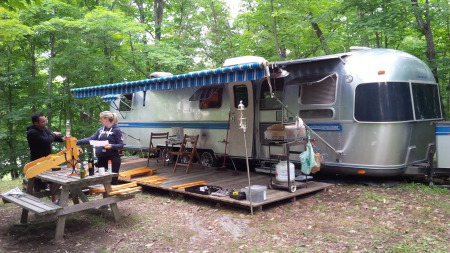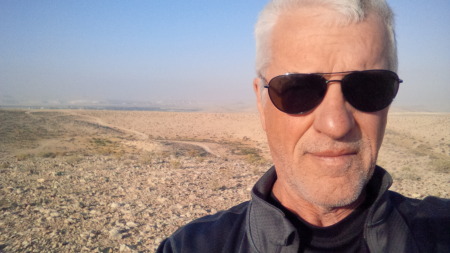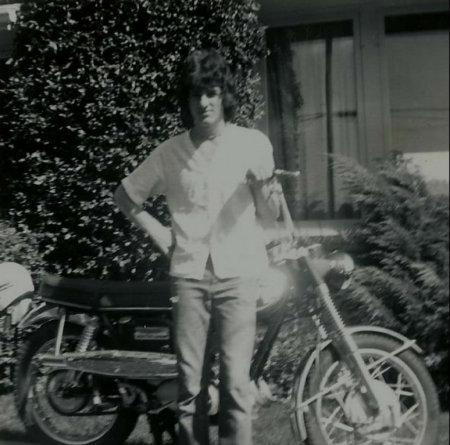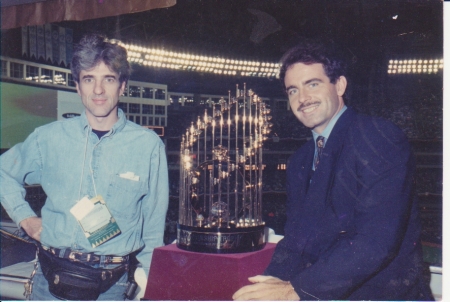Ted MacDonald:
CLASS OF 1972
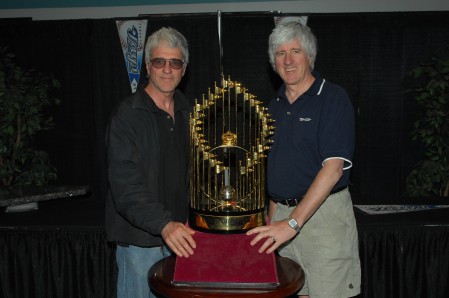
Aldershot High SchoolClass of 1972
Burlington, ON
Ted's Story
In this edition of her nightlife history series, Denise Benson revisits the club that brought nightlife to the deepest edge of downtown, welcomed legends like the Ramones and Beastie Boys, and transformed resident DJ Chris Sheppard into a globe-trotting superstar.
BY: DENISE BENSON
Club: RPM, 132 Queens Quay St. E.
Years in operation: 1985-1995
History: Before the mid-1980s, the bottom of Jarvis Street, along Queens Quay, was not a clubbing destination. Sure, people had been known to party at Jackieâs, a nightclub space created within the Hilton Hotel at Harbour Square (now the Westin Harbour Castle), and things at Captain Johnâs could get rowdy on occasion, but the area was far less traveled than it is today.
In 1984, brothers Albert and Tony Assoon brothers built on the success of their popular Richmond Street afterhours club, The Twilight Zone, and opened Fresh Restaurant and Nightclub at 132 Queens Quay St. E. Here, they laid the foundations for an entertainment complex that they would not be able to fully realize. Less than two years after Fresh had opened, the Assoons no longer held claim to the business. (Albert Assoon has told me directly that they were forced out while others have stated the demand note on the Assoonsâ loan was called in and could not immediately be paid in full.)
What this legal and financial tussle makes clear is that the huge converted warehouse building at 132 Queens Quay St. E. had already become a coveted nightclub spot. A week after its doors were chained, a crew of people largely associated with Yorkville hotspot The Copa (including Martin Arts and Neil Vosburgh), along with artist/entrepreneur Murray Ball, were the new owners.
The transformation from Fresh to RPM happened very quickly, with the latter reported to have opened its doors in late 1985.
âWe went in there on a Saturday night, and ended up renaming the club, redoing everything there, and it became what it became,â says DJ/producer Terry âTKâ Kelly, a Copa resident who morphed into RPMâs first star spinner.
With Murray Ball as creative directorâheâd been frontman for infamous Toronto punk band The Dishes and also owned Yonge Street restaurant/live-music venue Fiestaâand Martin Arts running the business side of things, RPM quickly grew to become the talk of the town.
The club attracted a stellar team of staff, DJs, visual artists, and live-music bookers. Together, they began to build audiences that would swell well beyond the venueâs original legal capacity of 1,100. The venue may have been off the beaten path, but that made going there an adventure. A free shuttle-bus service from Union Station also made the trek a breeze while an ingenious soundsystem installed by Ted MacDonald meant that live-music lovers and fans of DJed sounds alike were treated to booming, clear sound.
âMurray, and his partner Martin Arts, were amazing club operators and innovators,â says promoter Gary Topp, who, along with Gary Cormier, booked about 70 live shows at RPM between 1985 to 1989 under the banner of The Garys.
âRPM was really the first successful warehouse-to-club transformation in this country,â underscores Topp. âThere was nothing like RPM at the time. It made stars out of DJs like Chris Sheppard, and made dance music more popular than live music. No club owners have ever demonstrated so much artistry in operating a nightclub in this city. It was the place where interlocking subcultures were able to surface. It was a scene.â
Photo: Toronto Star archives.
Why it was important: The story of RPM is massive, multifaceted and involves an enormous cast of characters. The club made a noticeable impact on Torontoâs nightlife soon after it opened.
âThere were only a few clubs happening downtown at the time; this was way before the club district,â recalls promoter Jennstar, who was hired at RPM in the late-â80s and, over the course of five years, worked her way through jobs including ticket-taker, coat-check attendant, cigarette girl, bartender, go-go dancer, front-door hostess and more.
âThe Copa, Big Bop, The Diamond [now the Phoenix], and Klub Max were really the only big clubs in town,â she says. âRPM was especially unique due to its changing décor, and the live shows that happened there on the regular.â
RPM was designed to blow minds; oversized art was everywhere. Eyes were also tripped out by loads of black light, bright psychedelic lighting, and a number of raised go-go platforms. The dancefloor was huge, as was the raised stage and DJ booth that overlooked it all. A big round bar was the social centre of the main room, and there was also an upstairs lounge area with seating and pool tables.
â[Yet] RPM really was a down and dirty, simple club, without a lot of bells and whistles,â recalls Mike Borg, former owner of Gypsy Co-op and one-time manager of The Phoenix. He got his start at RPM in 1987, working his way up from bartender to general manager.
âWhat made RPM special were the creative, unique people behind it,â says Borg. âI learned so much from that place and from Murray and Martin. Murrayâs vision was ever-changing; like a gay man with a wardrobe problem, he manipulated the look of his club so dramatically every year that it kept people coming back for more.â
âMurray Ball was just filled with artistic expression,â writes Chris Sheppard by email. âAs Torontoâs Kenny Baird was dressing the cool clubs in N.Y.C., like Area and Limelight, Murray was bringing that vibe to RPM. One month, the large walls were done in a Warhol motif, the next it would be white masks influenced by an acid trip in the N.W.T.â
Changing his installations frequently, Ball decorated the club with dinosaurs, dolphins, an airplane with parachuting soldiers, flashing neon signs, and much more. Mentioned repeatedly by...Expand for more
those interviewed here are the wax figures of John F. Kennedy and Jackie O. sitting in a black convertible Cadillac that hung suspended from RPMâs ceiling, surrounded by an epic related scene.
âThe ever-changing or evolving décor was a dazzling whirlwind of eye-candyâvery Warholesque, very Vogue, very colourful, and very exaggerated,â says Topp. âMurray was a master of the art business; he could assemble people and their talents. He wanted every night, no matter what the event, to be a âhappeningâ of constant activity. Film, music, fashion, and the idea of celebrity drove the club. It was a very gay old time.â
Ballâs visual aesthetic was perfect for RPM as a dance club with rock ânâ roll edge. The club featured incredibly diverse music programming, from the dramatically different themed DJ nights to the vast array of bands booked.
Bar staff at the Round Bar, circa 1988. Photo: courtesy of Mike Borg.
Terry Kelly was already an established DJ when he took on multiple nights at RPM. Revered for his programming and mixing skills, Kelly initially held down the clubâs Psychedelic Mondays, Disco Thursdays, and dance-music Saturdays.
His Mondays were legendary, attracting thousands of downtowners every week. Kellyâs crates were jammed with seven-inch singles and albums representing rock music through the decades.
âI searched out records from my childhood, and I put the music together in a dance-mix fashion,â says Kelly of his approach. âWe also started incorporating new rock so it was natural to play Hendrix and then Nirvana, and it all started to melt together. People lost their minds at hearing all of this stuff blended; it was a natural progression and regression at the same time.
âOne minute youâd hear The Doors, and then Four Horsemen and AC/DC. I was all over the place, but everything I did came out like a dance mix; I was a club DJ at heart. When Andy Frost and the guys at Q-107 heard me beat-mixing rock, they freaked out. Mondays became a wild animal that I almost had no control over. Every week would blow up bigger than I thought.â
His Thursdays and Saturdays were also wildly popular. As a result, Kelly brought the house, funk, and new-wave blends to Saturdays for most of RPMâs years.
DJ/producer Chris Sheppard was the second resident DJ hired at RPM. He too shaped, and was shaped by, the club.
âIt was a blessing of the times to play the best venues, and RPM was surely near the top,â Sheppard says.
Brought in mere weeks after RPMâs doors at opened, Sheppard was hired away from his Sunday-night gig at The Copa, which at that point was the largest club Sheppard had DJed. The Copa was also the very spot where CFNY (now 102.1 the Edge) Program Director David Marsden had heard him blending rock and electronic music. Marsden subsequently hired the young Shep to create a related Saturday night radio show, which became Club 102.
Maria Del Mar (left), Al Jourgensen of Ministry, Ogre of Skinny Puppy
and Chris Sheppard backstage at RPM.
Sheppard came to RPMâs Sundays determined to play more underground music, and wanting to host an all-ages night. His mix of house, rave, drum ânâ bass and hip-hopâcombined with a free buffetâwas explosive.
âLiquor laws then were tricky,â Sheppard points out. âOn the corporate front, they did the Sunday free dinners to get around the booze-with-food rule. I looked at it as a chance to give free food to street kids and up-and-coming so-called starving artists. Win-win. It worked out well beyond belief. If you were a teen and did not go to RPM and line up around the block, then you were just not cool. Itâs as simple as that.â
The all-ages Sundays generally reached capacity well before 9 p.m. each week. Sheppard entertained those masses for years, even booking the occasional live act to up the ante.
âOne Sunday, I surprised the kids and brought the Beastie Boys out on stage. It was just before their first album went commercial. The place went nuts.â
DJs Terry Kelly and then Matt C, with opener John Craig, would later take over on Sundays. By then, Chris Sheppardâs 19-plus Friday nights at RPM were drawing capacity crowds and making history as a live-to-air broadcast heard on CFNY. The broadcast ratings were extraordinary, as was the energy inside RPM. Sheppard and his crewâwhich frequently included Bob-O, Peter the Greek, and Dave Hypeâplayed the likes of Ministry, The Cult and Nine Inch Nails alongside house, early bleep techno and other emerging rave sounds.
âAt first, the music was a hybrid of all things dance,â Sheppard recalls. âIt slowly became house music and all rave culture, and we left those dated rock sounds behind.
âPeople were very excited to be a part of the whole large-venue vibe, which was still kinda new. They would just let themselves be swept up into the sound of The Dogwhistle Soundsystem and the theatricality of the shows I would do. I would apply a certain psychic pressure, which to outsiders may be perceived as sinister. But, at the same time, the crowd knew they were in safe hands and that the effect I was giving them was benevolent. It was always a communal thing.â
Sheppardâwho also brought acts like Ministry, Skinny Puppy, and Chris & Cosey to RPMâs stageâbecame a genuine superstar during his years at the club. His career exploded on-air, in clubs, and on television as he also headlined all of the cityâs biggest raves, traveled internationally and released mixed CD series including The Techno Trip and Pirate Radio Sessions.
âRPM spawned club culture as we know it today in many ways,â Sheppard writes. âMost of todayâs players came by RPM to see how it was done. The people, lights, sound, artâRPMâs vibe was second to none
youtube watch?v=78D00dYOBrM (at work after school)
many years ago!
Register for Free to view all details!
Reunions
Photos
